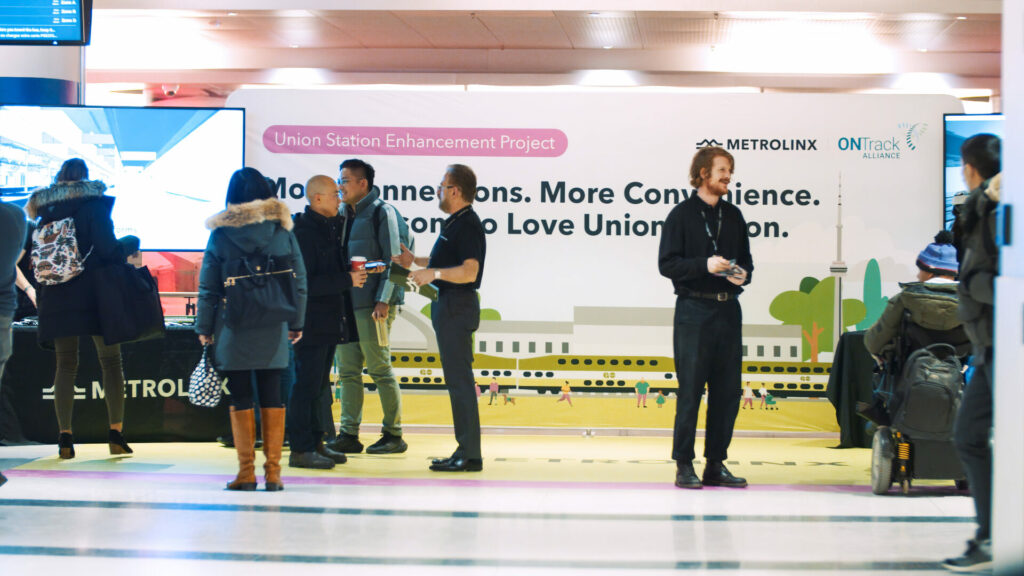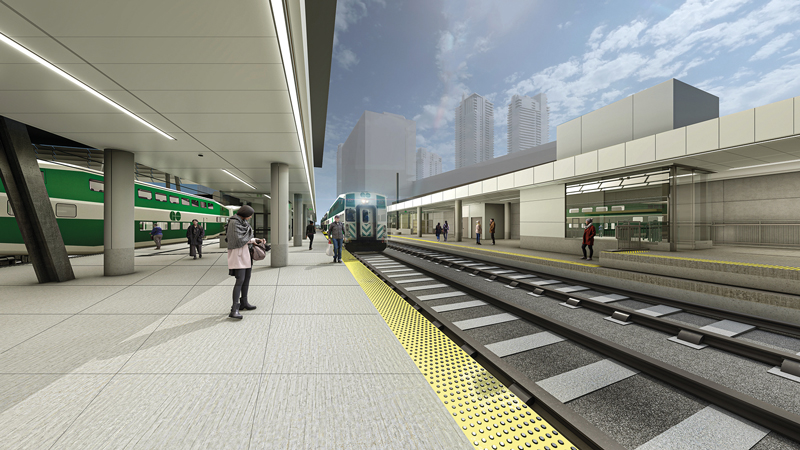By Jaclyn Squizzato
When you’re spending millions of dollars of taxpayer money to provide or upgrade a service, it’s important to help people understand how their dollars are being used. Traditionally, municipalities set up at local events or in the lobby at the city hall with staff members and volunteers available to explain how a project will be built and the amenities that will come with it.
The emergence of new technology is making it easier for people to see, first-hand, how a project will be laid out, how it will function, and how it will create benefits for those who interact with it. It’s a technology that, while originally intended to improve the design process, can also serve as an excellent demonstration tool for the public.
Virtual reality, but practical
We’ve been seeing the use of virtual reality for years demonstrated on movies and through video game systems. You put on a headset and can see a different world around you. As you turn, the view of the surrounding environment changes too, just like it would without the headset over your eyes.
A similar form of this technology is what is now fueling the design community. BIM (Building Information Modeling) offers significant advantages to traditional project delivery, allowing for all elements of the design to exist within a virtual design. Mechanical, electrical, plumbing, infrastructure, architecture, and other elements are layered together to create a full representation of the building and the infrastructure around buildings.
This integration has also made BIM a powerful tool for use in community relations activities. As transit organizations work to engage the public on their infrastructure projects, helping them understand how they will look and the service they will provide, BIM designs in a virtual reality setting that allows people to look around the interior and exterior of the facility, seeing how different elements will come together in the final project. This takes engagement to a whole new level, graduating from schematic drawings and designs to virtual tours.
This is exactly what the ONTrack Alliance team did for the Union Station Enhancement Project in Toronto. The ONTrack Alliance were able to turn our design stage BIMs into a virtual tour of the parts of the transit terminal that will be transformed as part of this project.
At a community awareness event held in Union Station, the team had the live model shown on a large-scale TV screen, and it was the biggest draw of the event. We walked users through the commands, and, within a few minutes, they were able to navigate through the model with minimal guidance. It was very well received by the people who tried it, and it helped to put into perspective the scale and design of the new platforms and concourse.
There was a wide variety of people who used the VR, including station operations staff who were interested in what we are building to transit enthusiasts who spent over half an hour walking around the model. It was accessible and easy to use. Many people commented that it was great that we were sharing so much information about the project, and the model was very cool.

BIM creates better projects
On the project development side, the main benefit of using BIM is the creation of a single source of truth through the model and through a CDE (Common Data Environment) which all team members use. BIM is not just model delivery—it is data delivery and data analytics. With proper education of all partners involved, it allows everyone to have a single source for information on project design, and where requests for changes can be tested to understand how they will impact the overall project.
Working on a project delivering through BIM ensures all data is generated from the models. In turn, this allows team members picking up the models to have confidence the 3D data they are working with reflects a specific submission, milestone or point in time. This allows design and construction to consume the models for clash review, VR, 4D, quantity review, and as-built creation.
The rail and transit sector has benefitted greatly from the integration of BIM, both for project development and community relations.
For the design team, delivery through BIM ensures linear (track, utilities, civil etc.) and buildings (mechanical, architectural, electrical, etc.) teams can get on the same page regarding project coordination and stay on the same page throughout the project. That has significant advantages for both teams, as the need for changes can be shown in real-time, and the impacts on other parts of the project can be demonstrated. As an example, if there is need to change positions of platform lighting infrastructure, and its associated wiring, you can then see how this will impact where infrastructure can come into the building, additional lengths of wire needed, and then be able to accurately understand the cost of that change for the rest of the surrounding infrastructure.
As we continue to adopt technologies that make our work more efficient, it’s important to also appreciate how these innovations can help us in our ability to communicate with people impacted by the infrastructure we build.
[This article originally appeared in the September/October 2023 edition of ReNew Canada]
Featured image: A rendering of a platform at Toronto’s Union Station, where ONTrack Alliance is delivering the Union Station Enhancement Project. (Metrolinx)












